Oleh : Andri Rosadi, Lc., M.Hum (Dosen Antropologi FIBA)
 Poetry has long been used by people in various countries to express their mind. They use it in different contexts, in various forms and for many purposes. In addition to its functions as a means to express self experience, it is also used to express criticism toward society, religion and nation. There are various type of poetry exist in societies, which are expressed for different context and purposes. In a very broad sense, it might be divided into traditional and modern one. In the Swahili and Arabic context, we could also find the traditional and modern poetry. This paper is an attempt to elaborate the idea of modern poetry in both Swahili and Arabic context.
Poetry has long been used by people in various countries to express their mind. They use it in different contexts, in various forms and for many purposes. In addition to its functions as a means to express self experience, it is also used to express criticism toward society, religion and nation. There are various type of poetry exist in societies, which are expressed for different context and purposes. In a very broad sense, it might be divided into traditional and modern one. In the Swahili and Arabic context, we could also find the traditional and modern poetry. This paper is an attempt to elaborate the idea of modern poetry in both Swahili and Arabic context.Tradition and modernity in poetry have been discussed by scholars and particularly poets, though the idea is to some extent still vague. There is no consensus among scholars on criteria by which the idea of tradition and modernity could be defined. The cutting line between the traditional and modern poetry in this paper will be drawn from three aspects, those are form, function and content or themes. Therefore, this paper will also looking at some Arabic and Swahili poems in order to recognize the cutting line between the old and the modern one comparing at the end the instruments the Swahili and Arab poets used in their poetry. With regard to the content, love, pain, sorrow and nation are among the main themes expressed in modern Swahili and Arabic literature. A brief discussion on the idea of modernity will be presented below in order to situate the poetry into the context
Modern Poetry in Swahili literature
Topan (1974: 175-76) divides Swahili poetry into four-broad categories. The first category is based on form characterized by symmetrical verses with equal number of lines and syllables in each verse. To him, this type is the most popular poetry with the poets and people. The second consists of songs performed in various contexts such as wedding and spirit ceremonies. In addition to the form, this type is also characterized by its communal purposes within community. To some extent, this type could be considered sacred since it is sanctioned by authority. The third is more or less similar to the second in term of form as both types are consisting of songs, but the third is much more profane and popular. It has a social and political nature. Although they are similar in term of form, but the content and function of this song is different from that of the second. The fourth is poetry which is characterized by it blank and free verse. In contrast to the three-previous poetry which has communal nature, the latter is much more individual in term of content.
Topan’s distinction of the four type poetry above is to some extent overlapping since the distinction is not based on similar criteria. In term of function, the first, second and third could be categorized into the same category since they are in fact having communal nature within the frame of traditionalism. Moreover, the second and the third type could also be categorized into the same category on the basis of their similarity in form, although they are dissimilar in term of contents and function. The fourth is probably the most distinct type of poetry since it differs from the others in term of content, form and function. It is individual in content, free verse in form and also modern in context. Generally, this latter type is called as modern poetry (mashairi ya kisasa). The form, that is free verse, becomes its main feature.
According to Topan (1974: 176), this free verse can be categorized into modern poetry as it is a recent innovation in Swahili literature obviously influenced by modern English poetry in response to rigidity of previous, traditional form. The spirit of literary adventure in purpose of creating new mode of expression which is more compatible to modern idea is also playing an important role in pushing the young Swahili in creating the free verse. In term of function, the free verse is more individual than the older one. It is an individual expression for the purpose of self actualization rather than in service of a ruler or guidance for community.
Although Swahili scholars are in dispute to response the emergence of this poetry, but its existence does not rely on the acceptance or rejection of those scholars. As poetry is in fact means of expression through which people articulate their mind, so its existence is rather more related to the nature of the poetry itself of whether it is compatible for individual or people’s minds and intentions. The emergence of this free verse implicitly indicates that the three previous types of poetry are no longer compatible to accommodate people’s mind due to social, cultural and political changes.
What does really make a modern Swahili poetry different from that of the old? It seems that form and content are the main categories by which a differentiation between traditional and modern poetry are drawn. In term of content, the early poetry was mainly related to the theme of religious belief. It expresses devotion and piety. Al-Inkishafi, which expresses the ephemeral nature of life and the necessity to obey God through proper conducts, is one example of this type of poetry (Topan 2006: 104). Utendi wa Mwana Kupona is another example which express the need for women to behave properly toward her husband under the common ground: religious-based tradition.
Later on, the early poetry also accommodated the idea of nationhood which best expressed by Muyaka bin Mwinyi Haji (1776-1840) in his poem:
T’umwi ukifika Zinji, Zinji la Mwana Aziza
Wambile waje kwa unji, unji tutawapunguza
Hawatatupiga msinji jingo wakalitimiza!
Wakija wakitekeza, maneno ni ufuoni.
(O Messenger! When you reach Zanzibar, the home of “Queen” Aziza,
Tell them (the Omanis) to come in large numbers, so that we may take our toll of them,
They will not lay the foundation of their empire here (in Mombassa) and thus complete their building (colonization of the Coast),
If they do make good their threats we shall certainly meet them on the beaches!
(cited in Topan 2006: 105)
In addition to the content, form of the old poem above is obviously confined within a rigid pattern in accordance with the prevailing type of poetry at the meantime. By the early 19th century, the topic slightly changed or broadened but still related to religious context (ibid) until the emergence of free verse, which is in many ways different from that of the older.
The emergence of free verse in the Swahili poetry can generally be said as an antithesis of the traditional genres of poetry in term of content and form. Instead of expressing religious belief, tradition and nationhood which are communal in nature, it expresses the very personal experience or expectation of life which occasionally contradicts to religious belief or community’s norms. Kezilahabi’s A Knife in Hand obviously expressed the idea of suicide which totally contradicts to religious belief.
Mbele chui mweusi, nyuma mwangsa
Nionaka kwa huzuni vifurushi maelfu ya dhambi
Kisu, maisha kafiri haya
Kama kutazama nyuma au mbele
Nu kufa moyo mzima!
There is a black leopard in front (of me), and light behind me
Where I see with sorrow a thousand packets of sin
Knife, a hard life of this
To look behind or in front
Is to be utterly despondent (lit. heart-broken)
(cited in Topan 1974: 177)
The idea of suicide comes into being in the modern Swahili poetry as a result of a process, which allows people’s imagination goes beyond traditional borders. This process has enabled one to communicate his sorrow so that it becomes public consumption. Pain, sorrow, and desperateness are no longer private; they have been transformed into a ‘communal spirit’ through modern poetry. However, suicide is not the end. Pain and sorrow are part of life so that people are in a need to learn how to solve it in a very best way. In this way, pain should be followed by optimism which enables people to go further successfully. Kezilahabi expresses:
Sasa kama Simba-Mtu shauri nimekata
Ya nyuma sana nisijali, ya mbele sana niyakabili
Kwa ujasiri na uangalifu nitazunguka
Nikifuata kamba kama ng’ombe aliyefungwa
Kila mpigo wa moyo wangu
Huu mpigo muziki wa maisha
Now, like a Man-Lion, I have made a decision
I shall ignore the past, I shall face the future
I shall move (in a circle) with courage and caution
Following the rope like a cow (tied to a post)
With every beat of my heart
This beat, the music of life
(cited in Topan 1974: 177)
In term of function, there is no enough explanation that communicating, and so sharing of sorrow to the public is a way to reduce its bitterness. It is also hard to situate it as merely self-actualization through which one expresses his mind. In the case where the poetry is criticism toward ruler or deviating situation, a poet might be possible to be regarded as a mouthpiece of his country or community.
Islam is probably the most influential element of Swahili culture. The mode of interaction between the Swahili culture and Islam does not happen in a linear way since Islam shapes and is shaped by Swahili. Mutual influence between both sides is accordingly transforming them in a way that makes Islam, on one side, more adaptable to the recent context of the Swahili, and the Swahili are allowed to have a broader interpretation of Islam on the other side. The old verses, which are very much influenced by Islamic teachings and served as a means to disseminate and then establish the domination of Islamic norms within Swahili community is no longer the case in the modern one. Islam could not limit the Swahili imagination and the Swahili have really aware of not being trapped within the Islamic themes. Husein’s The Drum and the Violin is an obvious example of how a Swahili poet breaks the boundary of religious belief. Instead of asserting the Islamicness of his thought, he expressed the idea of ‘syncretism’ which blend the two major religion of the community: Islam and Christianity.
Lazima niswali, lazima niabudu
Nimuabudu Allah
Lakini ataisikia sauti nyenye panda
Sauti inayotokana na mwenye kuwana
Kanzu na msalaba?
I must pray
I must worship Allah
But will He listen to a divided voice
The voice of someone who wears
Both a Muslim kanzu and a Christian cross
(cited in Topan 1974: 181)
The idea of being a Muslim and Christian at the same time is obviously new comparing to the content of older poetry. In this context, there is a transformation of themes as a result of interaction and assimilation with the non-Swahili people, particularly Western people. The transformation was possible to happen because the interaction and assimilation create a cultural exchange between both sides. This cultural exchange changes or develops the Swahili mind to be broader than it was. Therefore, more various themes of their poetry could be found later on.
With regard to the comparison with Arab modern poetry, it seems to me that the idea of modern poetry in Arab literature in term of free verse come earlier than the Swahili’s one. In Arab literature, it formally emerged at the end of the first half of the twentieth century. However, the spirit of liberty to get rid of rigidity of the older seems to be similar to the Swahili. Moreover, the role of cultural exchange plays an important role in bringing about the idea of modern poetry in both the Swahili and Arab literature. In order to compare between both literatures, elaboration of Arab modern poetry will be offered below.
Modern Arabic Poetry
Adonis (2003: 75) stated that understanding of modern Arab poetry must be based on its social, cultural and political context. Time is not the main element of modernity since human history is continuously going on. It is a matter of quality rather than time. Creativity and particularity is much more significant as the main element of modernity because they give such kind of quality distinguishing one from the other type. It is rather “a way of seeing before it is production” (ibid: 79). Hence, modern poetry is a creative and particular poetry different in many ways from the existing one.
Broadly speaking, creativity and particularity of modern Arab poetry can be recognized through three main aspects: form, function and themes. In term of form, rigidity of previous form is no longer compatible to accommodate the recent situation. A more flexible pattern is needed. In this context, free verses are more compatible for poets. In free verse, the poets have nothing to do with all kind of rhythm, rhyme, and quantity of lines for every verse. Unity of form is considered the element of traditionalism. Several metres are mixed together in a same poem in a way that makes the authentic rhythmical structure, which was dominant in the old verse, disappears (Jayyusi and Tingley 1977: 542). In a free verse, a reader can read on without stopping on one verse since the complete meaning could extend over more than three verses (ibid: 542). It is the need of the meaning which determines the number of the feet rather than the rhythmical structure (ibid: 545).
Disappearance of the authentic rhythmical structure in the free verse is consequently followed by a problem of symmetry and equilibrium. The verse is no longer symmetry and equilibrium since the pattern does not require these. The metre of each verse in the same poem would dissimilar. This sudden change would create a rigidity of meaning rather than a flow. In this context, this matter creates such kind of disharmony between form and content (ibid: 542).
In term of function, a modern poetry is characterised by privatization of poetry. Ruler, king or tribal chief is no longer the end. It shifts from the court literature to the private one. Themes of modern poetry also change incorporating the recent situation of human experience. Instead of expressing religious belief aiming at establishing religious norms within community, a poet expresses his own love, pain, sorrow and criticism towards socio-political condition of his environment. The change of these three main aspects of poetry, those are form, function and theme are as a result of transformation which leads eventually to the emergence of modern Arabic poetry.
Generally speaking, Arabic literature is characterised by the static and transforming element. Form, function and themes in Arabic modern poetry are part of the transforming elements. Transforming elements are adaptable to any changes since no sanction is given for any dissonance voice; while any dissonance voice against the static one is always sanctioned by authority. Modernity in this context is only a sign to view a moment of transformation from the traditional into the new one as a result of creativity resulting finally a particularity.
Why does such a transformation occur? To Adonis (2003: 88-89), there are at least three movements which lead to the born of modern Arabic poetry. The first is urban-sedentary dimension which brings new value different from the desert-Bedouin life. The distinction of socio-cultural context between sedentary and desert life inspires new themes to poets. The second movement related to linguistic dimension, the sedentary poetry is metaphoric in character different from the desert which is characterised by the rhetoric of reality rooted from the previous Bedouin tradition. The last movement is related to the cultural exchange as a result of assimilation and interaction with outside cultures. Urban city is host of different cultures interacting and influencing each other in different ways. The emergence of modern Arabic poetry, including the free verse, should be viewed in the light of this context.
The formal movement of the free verse started in 1949 coincided with the publication of the second diwan of N. Al-Malaika (b. 1923), Shazaya wa Ramad (Jayyusi and Tingley 1977: 557). Free verse emerged as a result of socio-political situation in the Arab world, particularly related to the conflict between Arab and Israel. It was known that in this conflict, a great number of Palestinian Arab have been expelled from their homeland by Israel. The spirit of liberty overcomes the Arab mind. The free verse comes forward in this situation. It gained the moment and absolutely suited the historic and psychological moment of the Arab world. It can be said that the spirit of liberty in the free verse gives mental, political and social energy to the Arab world (ibid: 558). Moreover, the political and social situation in the Arab world could easily be accommodated into the poetry. To sum up, both the form of the poetry and socio-political situation of the Arab world at the time of its emergence suited each other. In order to go further to this kind of poetry, I would like to elaborate below some themes of modern Arabic poetry and the instrument used to articulate them into the poetry.
Themes of Modern Arabic poetry
Modern Arabic poetry covers a wide range of themes, mostly related to personal or socio-political situations. Pain, sorrow and love of nation or home land are among the popular themes. Badr Shakir al-Sayyab (1926-1964), one of the greatest poets in Arabic poetry and has contributed considerably for the emergence of the free verse movement, wrote many personal and socio-political poems. His Rain Song is regarded as one of the best free verse in Arabic literature. In this poem, rain is a metaphor through which he expresses Iraqi sorrow and pain:
Do you know what sorrow the rain can inspire?
Do you know how gutters weep when it pours down?
Do you know how lost a solitary person feels in the rain?
Endless, like spilt blood, like hungry people, like love,
Like children, like the dead, endless the rain.
Rain is an inspiring word whose situation is used to describe a set of sorrow. When it is raining, people are isolated each other. They are fear of lightning and thunder, and sometimes rain is also followed by blustery wind. Rain is also metaphor for spilt blood symbolizing the authoritarianism where human’s soul has no value. Rain is endless, like hungry and love which come through as long as one is living.
..........................
Since we had been children, the sky
Would be clouded in wintertime,
And down would pour the rain,
And every year when earth turned green the hunger struck us.
Not a year has passed without hunger in Iraq.
Rain is precondition for agricultural activity. Despite continuity of rain in Iraq, hunger is still there, as if rain has no contribution in making the earth greener. In fact, Sayyab describes the paradox of the situation. It is rather a socio-political criticism toward the authoritarian ruler of Iraq. However, optimism is still found in this song. Sayyab believes that rain will bless people in the future, “Iraq will blossom one day in the rain” (430). In this poem, Sayyab has made use of natural phenomenon to describe and criticize the socio-political circumstances of his home land, where pain, sorrow and poverty are still part of life.
Another poet, Salah ‘Abd al-Sabur (1931-1981), an Egyptian poet and dramatist, describe people’s sorrow in The People of My Country at the time of famine.
The people of my country wound like falcons
Their songs are like the chill of winter in the rain’s locks
Their laughter hisses like flame through firewood
Their footsteps dent the firm earth
They kill, steal, drink, belch,
But they have their human worth and are good
When they have a handful of money
They hold fast to their belief in fate.
......................................
Uncle Mustafa’s grandson
And when he stretched up his brawny arms toward the sky
A look of contempt flickered across his eyes
For it was a year of famine
Similar to al-Sayyab, ‘Abd al-Sabur has made used of natural phenomenon in his poem. Season, fire and earth are the main instruments to describe the character of his people. He makes a contrast between the qualities of humanity on the one hand, and immoral attitudes they have on the other hand. In another poem, similar to al-Sayyab, ‘Abd al-Sabur makes use of season in his Winter Song.
The winter tells me I shall die alone
One winter just like this, one winter
...................................................
The winter tells me that what I thought
Was my cure, was really my bane
That this art when it set me trembling
Brought about by downfall
How many years since I got this wound?
But still my head is bloody
Poetry my ruin, for this
Everything’s run for to waste
For this, I became a drop-out
For this, I became crucified
I hung there, cold, darkness, thunder
Shook me with terror
When I called, there was no answer,
I knew that all was lost! (126)
What does he mean by winter here? It perhaps the situation where one shivers because of coldness, scare because of darkness and thunder, and alienated from his group. It is a condition where someone becomes totally alone, and suffers from fear and coldness. It is probably a situation where people mentally and physically at the peak of their weakness. Are shiver, coldness, darkness and thunder metaphorical or natural? To me, it seems a metaphorical rather than natural phenomenon. The poem cited above obviously show us how Arab poet made use of natural phenomena, animal and tree as the metaphor through which criticism, sorrow and optimism are expressed to the public.
Arabic and Swahili: concluding remarks
Elaboration of the Swahili and Arab modern poetry above does not mean to represent the whole poetry in the two traditions. However, similarity and difference between both traditions can be drawn. The main factor pushes the emergence of the free verse in the Swahili and Arab is seemingly Western literature, and the emergence suited to the historic and psychological moment of the two traditions. Free verse is a representation of how the Swahili and Arab poets create more rooms for freedom in order to incorporate new themes into poetry. The distinction which could be drawn on the basis of the examples cited above is related to the use of language. Arab poets seem to make use of metaphor inspired by the natural phenomenon such as seasons, while the Swahili poets prefer to use the rhetoric of reality.
Reference
Adonis (2003) An Introduction to Arabic Poetry, London: Saqi Books
Jayyusi, Salma Khadra, and Christopher Tingley (1977) Trends and Movements in Modern
Arabic Poetry, Amsterdam: Brill [online]. Available at: http://books.google.co.id/books?id=8pI3AAAAIAAJ&pg=PA534&lpg=PA534&dq=arabic+free+verse&source=bl&ots=ed26G2523s&sig=6RDg7S6a_oMOG5cnvtP-Z9Z0rfs&hl=id&ei=kZQ-SsqkO-LKjAe7qOUY&sa=X&oi=book_result&ct=result&resnum=4 (access: 20 June 2009)
Topan, Farouk (1974) “Modern Swahili Poetry” in Bulletin of the School of Oriental and
African Studies, vol 37 no 1.
Topan Farouk (2006) “Why Does a Swahili Writer Write? Euphoria, Pain, and Popular
Aspirations in Swahili Literature” in Research in African Literatures. Vol 37, no. 3 (Fall)

























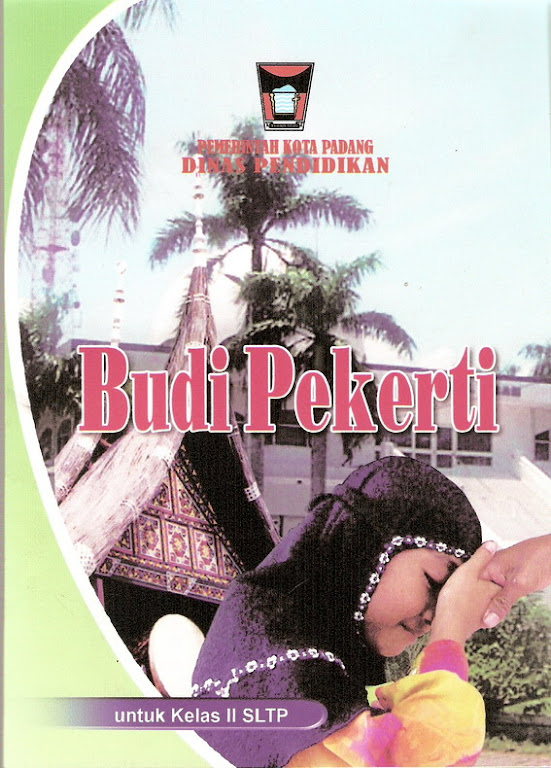



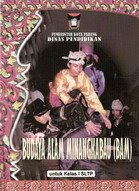

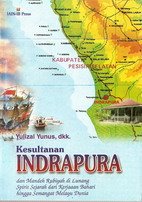



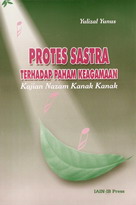
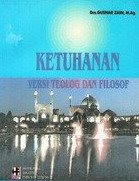




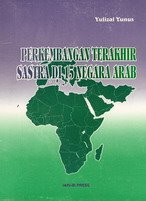











Tidak ada komentar:
Posting Komentar